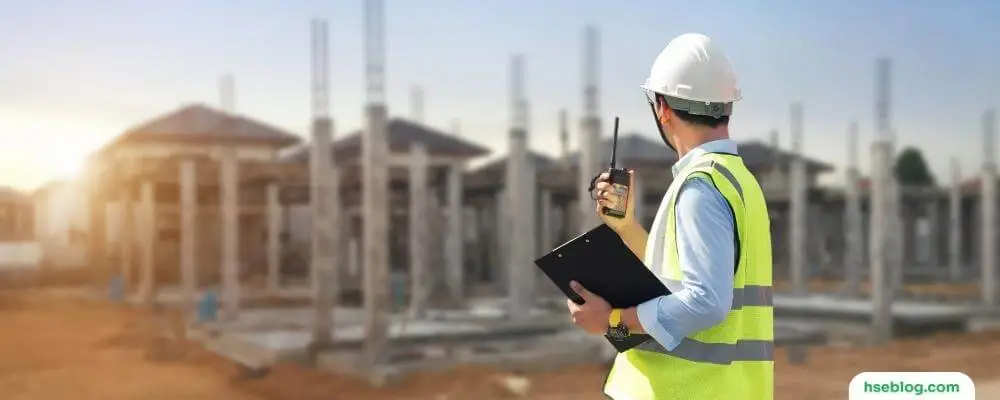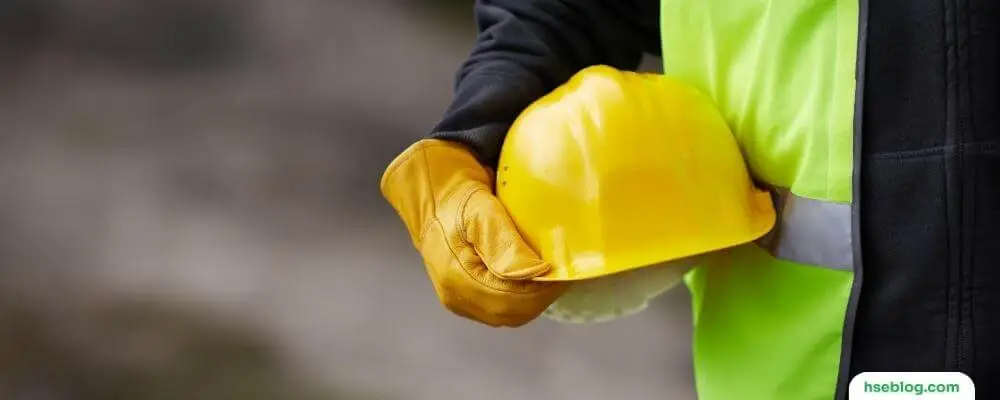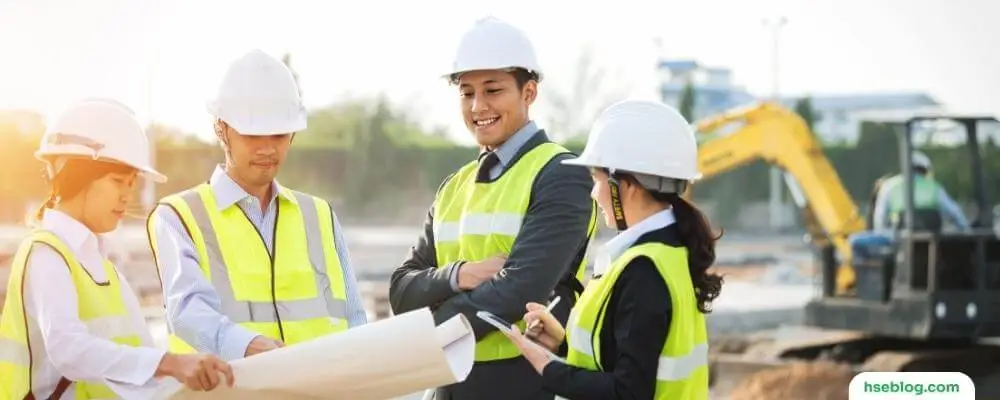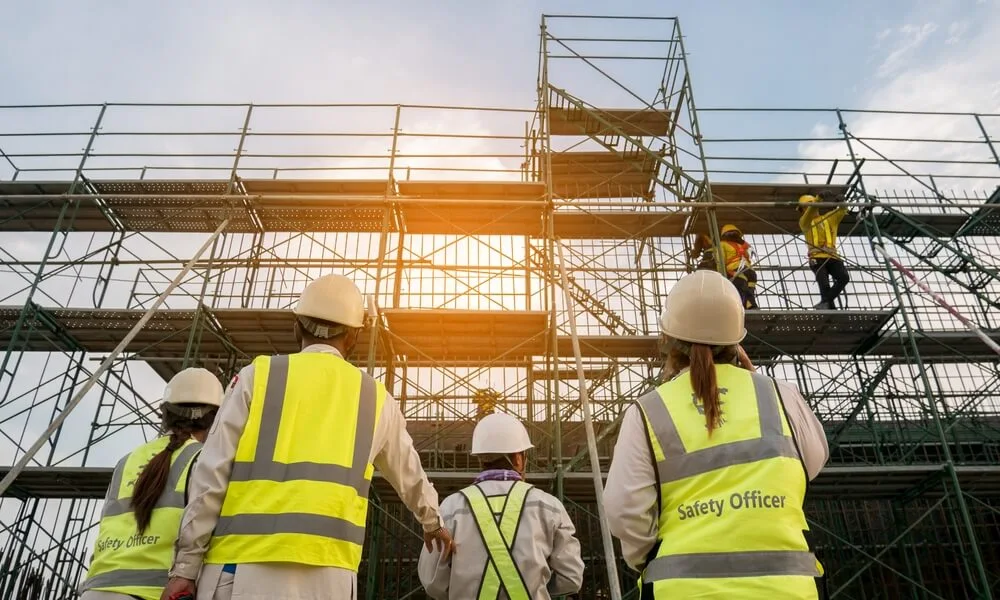In the construction world, safety is not just a priority; it’s a necessity. It is the foundation of successful projects and the cornerstone of a productive, engaged workforce. That’s where the Construction Safety Officer comes in. As the torchbearer of safety on the construction site, they are pivotal in maintaining a secure and hazard-free work environment. But what exactly does their job entail?
In this blog, we will delve into the multifaceted duties and responsibilities of a Construction Safety Officer. From conducting risk assessments and implementing safety policies to promoting a safety culture, we will explore the various aspects that make this role vital in the construction industry.
Whether you’re an aspiring Construction Safety Officer seeking to understand the scope of the role, a seasoned professional looking for a refresher, or simply curious about the workings of safety management in construction, this blog will provide the insights you’re seeking. So, let’s put on our safety helmets and get started!
Construction Safety Officer | Duties & Responsibilities
A Construction Safety Officer ensures construction workers follow established policies and safety regulations. They help create safer construction sites, and their duties and responsibilities often include the following:
1. Risk Assessment
Risk assessment involves systematically examining a workplace to identify hazards, assess injury severity and likelihood, and implement control measures. It can be quite complex in a construction site context due to the variety and changing nature of the work environment, tasks, and the range of potential hazards. Here is a breakdown of the process:
- Hazard Identification: This involves identifying things that have the potential to cause harm. These can be physical (e.g., unguarded machinery, working at height, moving vehicles), chemical (e.g., cement dust, diesel exhaust), biological (e.g., harmful bacteria in the soil), or related to work organization (e.g., excessive workload, long hours).
- Risk Analysis: Once hazards are identified, the Safety Officer must understand who could be harmed and how. This involves considering the severity of the potential harm, the likelihood of it occurring, and existing safety measures. For example, a worker might fall from height if guardrails are not installed, resulting in severe injury or death.
- Risk Evaluation: This step involves comparing the identified and analyzed risk against acceptable risk levels. The Safety Officer must prioritize risks based on their potential impact and probability.
- Implementing Control Measures: After evaluating the risks, the Safety Officer must decide on precautions and safety measures. This could involve adding physical safety measures (e.g., installing guardrails, providing personal protective equipment), changing work practices, or providing workplace safety training.
- Monitoring and Review: Risk assessment is an ongoing process. The Safety Officer must regularly review risk assessments, especially when workplace changes (e.g., new equipment, new work processes), and ensure that control measures remain effective.
- Documentation: It’s important to record the findings of the risk assessment. This can be a crucial part of demonstrating regulatory compliance, and it helps review the process or train new staff.
Remember that risk can often be reduced but not completely eliminated, particularly in high-risk industries like construction. Risk assessment aims to reduce the risk reasonably and manage what can’t be eliminated.

2. Safety Policies and Procedures
Safety policies and procedures form the backbone of safety management in any organization. Developing a comprehensive safety framework, such as RAMS in Construction, helps integrate risk assessments and method statements, ensuring that safety protocols are not only defined but also actionable.
In the construction context, they are particularly important due to the high-risk nature of the work. Here’s a more detailed look at this responsibility:
- Developing Safety Policies: A safety policy is a written document stating a company’s safety commitment. It typically includes the company’s vision and goals regarding safety, the responsibilities of managers, supervisors, and employees, and general rules and regulations everyone should adhere to. The Construction Safety Officer may need to draft or revise this policy, ensuring it’s comprehensive and aligned with company values and legal requirements.
- Developing Safety Procedures: Specific instructions describe the safest and most efficient way to perform tasks or use the equipment. These procedures should cover all aspects of work on the construction site, from operating heavy machinery to the correct use of personal protective equipment (PPE), to procedures for reporting accidents or near misses.
- Implementing Policies and Procedures: Once policies and procedures are developed, the Safety Officer must ensure they’re effectively implemented. This could involve organizing training sessions, creating safety signs and posters, and encouraging managers and supervisors to enforce the procedures.
- Monitoring Adherence: The Safety Officer must also monitor adherence to the safety policies and procedures. This involves regular site inspections and audits and investigating accidents or near misses to see if a failure to follow procedures was a contributing factor.
- Review and Update: Safety policies and procedures should not be static documents. The Safety Officer should regularly review and update them based on new information, changes in legislation, or lessons learned from accidents or near misses.
- Communication: Effective communication of safety policies and procedures is crucial. The Safety Officer must ensure that all workers, including new hires, temporary staff, and contractors, know and understand the safety procedures. This could involve written materials, verbal briefings, training sessions, or a combination.
Remember, the ultimate goal of safety policies and procedures is to create a safe and healthy work environment that minimizes the risk of accidents or health issues.
3. Training and Education
Training and education are vital for ensuring safety on construction sites. As a Construction Safety Officer, your role would involve organizing and delivering various training programs. Here’s a more detailed overview:
- Safety Induction Training: This is the first training a new worker should receive. It introduces the worker to the company’s safety policies and procedures, emergency procedures, specific rules of the construction site, and their rights and responsibilities regarding safety.
- Job-Specific Safety Training: Different jobs on a construction site have different hazards. A crane operator, a welder, and a carpenter face different risks and must follow different safety procedures. The Safety Officer must ensure that workers receive training specific to their roles.
- Equipment Training: Workers should be trained on the correct use of all equipment they will be using, including safety equipment. This could include training on how to wear and use personal protective equipment (PPE), operate machinery safely, and use safety devices like harnesses or fall arrest systems.
- Hazardous Material Handling: If workers are likely to encounter hazardous materials (such as asbestos, lead, or certain chemicals), they should receive training on handling these materials safely. This training should cover the correct use of PPE, safe handling procedures, and what to do in case of exposure.
- Emergency Procedures: All workers should be trained on what to do in an emergency. This could include training on evacuation procedures, fire extinguishers, first aid procedures, and how to respond to incidents like chemical spills.
- Regular Refresher Courses: Safety training is not a one-time event. Workers need regular refresher courses to ensure that they remember their training and to update them on any changes to safety procedures or regulations.
- Record Keeping: It’s important to keep detailed records of all safety training conducted. This not only helps to ensure that all workers have received appropriate training, but it may also be a legal requirement.
- Evaluation: The effectiveness of safety training should be evaluated periodically. This could involve observing workers to see if they are following safety procedures, reviewing accident and near-miss reports to identify any training-related issues, or asking workers for feedback on the training.
Remember, the goal of safety training is not just to comply with regulations but to create a culture of safety where all workers are actively involved in identifying and controlling hazards.

4. Safety Equipment
Ensuring the availability, good condition, and correct use of safety equipment is a key responsibility of a Construction Safety Officer. Here’s a more detailed explanation:
- Availability of Safety Equipment: The Safety Officer must ensure appropriate safety equipment is available for all workers. This can include personal protective equipment (PPE) like helmets, gloves, safety glasses, high visibility vests, and safety shoes. In addition, it might also include other safety devices like harnesses for work at heights, safety nets, guardrails, and safety signs.
- Maintenance and Inspection of Equipment: Safety equipment must function properly and be in good working condition. Regular inspections and maintenance of this equipment are crucial. The Safety Officer may conduct these inspections personally or supervise others performing them. This could involve checking the condition of PPE, ensuring safety devices are in good working order, or ensuring that safety signs are clear and visible.
- Correct Use of Equipment: Safety equipment is insufficient if workers don’t use it correctly. The Safety Officer must ensure that all workers properly use their safety equipment. This involves providing training on correct usage, observing workers to ensure they are using equipment properly, and correcting any misuse.
- Replacement of Equipment: When safety equipment becomes damaged or worn out, it must be replaced promptly. The Safety Officer should have a system for workers to report damaged equipment and ensure that replacements are provided quickly.
- Adherence to Regulations: Different jurisdictions have different rules and regulations regarding safety equipment. The Safety Officer should be familiar with these regulations and ensure the company’s practices comply. This might involve keeping current with regulation changes, liaising with regulatory authorities, or consulting with safety experts.
- Documentation: The Safety Officer should keep records of safety equipment inspections, maintenance activities, and training sessions. These records can demonstrate compliance with safety regulations and can also be useful for identifying recurring issues or trends.
Remember, the goal is to minimize the risk of injuries and accidents. Safety equipment is a key part of this, but it’s just one part of a broader safety management system that includes risk assessments, safety procedures, and safety training.
5. Accident Investigation
Investigating accidents, incidents, and near misses is a key responsibility of a Construction Safety Officer. Understanding what happened and why can help to prevent similar incidents in the future. Here’s a more detailed look at this process:
- Investigating Accidents and Incidents: When an accident or incident occurs, the Safety Officer’s role is to investigate what happened. This involves gathering information about the incident (e.g., through interviews with witnesses, examining the scene, reviewing CCTV footage if available), analyzing this information to determine the cause(s), and identifying what could have been done differently to prevent it.
- Investigating Near Misses: A near miss is a situation where an accident could have occurred but didn’t. Investigating near misses is as important as investigating actual accidents because it can provide valuable information about potential hazards and weaknesses in safety procedures.
- Identifying Preventive Measures: Once the causes of an incident have been identified, the Safety Officer needs to determine how to prevent similar incidents in the future. This could involve revising safety procedures, providing additional training, improving supervision, or changing the physical environment.
- Recording and Reporting: All accidents, incidents, and near misses should be detailed. These records can help to identify patterns or trends, and they can also be used to demonstrate compliance with safety regulations. Depending on the severity of the incident and the local regulations, it may also need to be reported to regulatory authorities.
- Communicating Findings: The results of accident investigations should be communicated to management, workers, and others as appropriate. This can help improve awareness of safety issues, encourage compliance with safety procedures, and foster a safety culture.
- Review and Update: After the investigation and implementation of preventive measures, reviewing these actions after a period to evaluate their effectiveness is important. If the measures taken are ineffective, they should be revised or replaced.
Remember, the goal of accident investigation is not to assign blame but to understand why the incident happened and how similar incidents can be prevented in the future.

6. Regulatory Compliance
Ensuring compliance with safety regulations is one of the most important aspects of a Construction Safety Officer’s role. These regulations are designed to protect workers’ health and safety, and non-compliance can result in severe penalties, including fines and legal action. Here’s a more detailed explanation:
- Understanding Regulations: The Safety Officer needs a comprehensive understanding of all relevant safety regulations. These can include local, state, and federal regulations and industry-specific standards. This might involve studying legislation and guidelines, attending training courses or seminars, or consulting with legal experts or safety professionals.
- Implementing Regulations: The Safety Officer must ensure the company’s practices comply with all relevant regulations. This could involve developing safety procedures, providing training, ensuring the availability and proper use of safety equipment, and conducting regular inspections and audits.
- Liaising with Regulatory Authorities: The Safety Officer may need to liaise with regulatory authorities. This could involve reporting accidents or incidents, responding to inspections or inquiries, or seeking advice or clarification on certain issues.
- Keeping Up to Date: Safety regulations can change over time, so it’s important for the Safety Officer to keep up to date with these changes. This might involve subscribing to updates from regulatory authorities, attending industry events, or participating in professional networks.
- Documentation: The Safety Officer should maintain detailed records of all activities related to regulatory compliance. This can include records of inspections, accident reports, training records, and more. These records can be used to demonstrate compliance in case of an audit or inspection, and they can also be useful for identifying trends or areas for improvement.
- Compliance Culture: The Safety Officer should strive to create a culture of compliance within the organization. This involves enforcing rules and regulations, educating workers about their importance, and fostering an environment where safety is valued and prioritized.
Remember, regulatory compliance is not just about avoiding penalties. It’s also about protecting workers, reducing the risk of accidents, and creating a safe and healthy work environment.
7. Emergency Response Planning
A well-prepared emergency response plan is essential for the safety of everyone on a construction site. Developing and implementing these plans is critical to your role as a Construction Safety Officer. Here’s a more detailed look at the process:
- Developing Emergency Response Plans: The Safety Officer should work with other key personnel to develop emergency response plans tailored to the specific needs and risks of the construction site. These plans should cover various types of emergencies, such as fires, chemical spills, medical emergencies, natural disasters, and workplace violence. The plan should include information on evacuation routes, emergency assembly points, emergency contact information, and the roles and responsibilities of key personnel during an emergency.
- Communicating Plans: Once the emergency response plans are developed, the Safety Officer must ensure that all workers know the plans and understand their roles and responsibilities during an emergency. This could involve distributing written materials, providing verbal briefings, or conducting training sessions.
- Conducting Drills: Regular drills are an essential part of emergency preparedness. They help to ensure that workers know what to do during an emergency and can identify any issues or weaknesses in the emergency response plan. The Safety Officer should organize these drills, including fire, evacuation, or other scenario-based exercises.
- Evaluating Drills: The Safety Officer should evaluate each drill’s effectiveness. This could involve gathering participant feedback, identifying any problems during the drill, and determining whether any changes need to be made to the emergency response plan or training.
- Updating Plans: Emergency response plans should be reviewed and updated regularly, particularly when there are changes in the workplace, such as new equipment, new work processes, or personnel changes. The Safety Officer should ensure that these updates are communicated to all workers.
- Coordinating with External Agencies: In some cases, emergency response plans may need to be coordinated with external agencies, such as the fire department, police, or emergency medical services. The Safety Officer should establish relationships with these agencies and ensure they know the construction site’s emergency response plans.
Remember, the goal of emergency response planning is to minimize the impact of emergencies on the health and safety of workers and to ensure a swift and effective response in case of an emergency.

8. Promoting a Safety Culture
Promoting a safety culture is not just about enforcing rules and regulations; it’s about creating an environment where everyone values and prioritizes safety. Something as simple as understanding hard hat colors can reinforce this culture by helping workers quickly identify team leaders, safety personnel, and specific job roles. Here’s a detailed explanation of this role:
- Running Safety Campaigns: The Safety Officer can organize campaigns to raise awareness about specific safety issues or to promote general safety principles. These campaigns can involve various activities, such as distributing safety materials (like posters, leaflets, or stickers), organizing safety-themed events, or running competitions.
- Organizing Safety Meetings: Regular safety meetings can be a valuable tool for promoting a safety culture. These meetings can discuss recent incidents or near misses, introduce new safety procedures, provide training, or discuss specific safety topics. The Safety Officer should ensure these meetings are interactive and engaging, allowing workers to share their experiences and ideas.
- Rewarding Safe Behavior: Recognizing and rewarding safe behavior can be a powerful motivator. The Safety Officer could set up a system where workers are rewarded for demonstrating safe behavior, reporting hazards, or making suggestions to improve safety. Rewards could be anything from verbal recognition to small prizes or bonuses.
- Leading by Example: As a Safety Officer, one of the most effective ways to promote a safety culture is to lead by example. This means always adhering to safety procedures, wearing appropriate equipment, and showing a genuine commitment to safety.
- Open Communication: The Safety Officer should encourage open communication about safety. Workers should feel comfortable reporting hazards, near misses, or safety concerns without fear of retaliation.
- Continuous Learning: Promoting a continuous learning culture can help keep safety at everyone’s mind. This could involve regular safety training, learning from incidents or near misses, or staying updated with the latest safety research and best practices.
Remember, promoting a safety culture is a long-term process that requires commitment from everyone in the organization. It’s not just about reducing accidents but about creating an environment where everyone feels responsible for safety and is actively involved in maintaining and improving it.
9. Documentation
Documentation is a fundamental responsibility of a Construction Safety Officer. It ensures that there’s a record of all safety-related activities, which can be critical for legal compliance, demonstrating due diligence, and learning from past experiences. Here’s a more detailed breakdown:
- Inspections: The Safety Officer should document all inspections conducted on the construction site. This documentation should include the inspection date, the person who conducted it, the areas or equipment inspected, any hazards identified, and any corrective actions taken.
- Training Sessions: Records of safety training sessions should be maintained. This includes information such as the date of the training, the instructor, the topic, the materials used, and a list of attendees. It’s also good practice to include an evaluation of the training’s effectiveness, which could be based on feedback from participants or observations of behavior changes.
- Accidents and Incidents: All accidents, incidents, and near misses should be thoroughly documented. These records should include details of what happened, when and where it happened, who was involved, the causes of the incident, any injuries or damage caused, and any corrective actions taken.
- Corrective Actions: Whenever a hazard is identified or an incident occurs, it’s important to document any corrective actions taken. This includes the nature of the action, who carried it out when it was completed, and any follow-up actions required.
- Safety Meetings and Campaigns: Details of safety meetings and campaigns should also be recorded. This can help to show how safety information is communicated and can provide a record of what topics have been covered.
- Regulatory Compliance: Documentation is often required to demonstrate compliance with safety regulations. This could include records of inspections, risk assessments, training, accident reports, and more.
- Review and Update: The Safety Officer should periodically review and update the documentation to ensure its accuracy and relevance. This can help to identify trends, evaluate the effectiveness of safety measures, and plan future safety activities.
Remember, accurate and thorough documentation is crucial for managing safety effectively. Not only does it help to ensure legal compliance, but it also provides valuable information for improving safety performance.

10. Subcontractor Management
Ensuring the safety compliance of subcontractors and suppliers is an essential duty of a Construction Safety Officer. Subcontractors often perform significant parts of construction work, and their actions can greatly impact the overall safety of a site. Here’s a detailed view of this responsibility:
- Prequalification: Before hiring a subcontractor, ensuring they have a strong safety record and a commitment to safety is important. This can involve checking their safety statistics, requesting references, or reviewing their safety policies and procedures.
- Contractual Obligations: All contracts with subcontractors and suppliers should clearly state safety requirements. This should include compliance with all relevant safety regulations, as well as any site-specific safety policies and procedures.
- Orientation and Training: When subcontractors start work on the site, they should receive an orientation that covers the site’s safety policies and procedures, emergency procedures, and any specific hazards they might encounter. Depending on the nature of their work, they may also require additional safety training.
- Monitoring Compliance: The Safety Officer should regularly monitor subcontractors to ensure they comply with safety requirements. This can involve regular inspections and audits, reviewing their safety records, or observing their work practices.
- Communication: Maintaining open lines of communication with subcontractors is key. They should feel comfortable reporting hazards or safety concerns and be informed about any safety policy or procedure changes.
- Corrective Actions: If a subcontractor fails to comply with safety requirements, the Safety Officer must take appropriate corrective actions. This could involve providing additional training, revising procedures, or in serious cases, terminating the contract.
- Documentation: All safety-related interactions with subcontractors should be documented. This includes records of inspections, training sessions, meetings, reported incidents, and corrective actions.
Remember, when managing subcontractors, the goal is to ensure their compliance with safety requirements and foster a collaborative relationship where everyone is committed to maintaining a safe work environment.
Additional Duties & Responsibilities Of A Construction Safety Officer
- Inspects the site to ensure it is a hazard-free environment.
- Conducts toolbox meetings
- Is part of the project safety council and leads all efforts to enhance safety
- The safety officer reviews and approves all subcontractor’s safety plans
- Verifies that injury logs and reports are completed and submitted to related government agencies
- Verifies that all tools and equipment are adequate and safe for use.
- Promotes safe practices at the job site.
- Enforces safety guidelines.
- Trains and carries out drills and exercises on how to manage emergency situations.
- Conducts investigations of all accidents and near-misses.
- Reports to concerned authorities as requested or mandated by regulations.
- Conducts job hazard analyses.
- Establishes safety standards and policies as needed.
- Performs emergency response drills.
- Watches out for the safety of all workers and works to protect them from entering hazardous situations.
- Responds to employees’ safety concerns.
- Coordinates registration and removal of hazardous waste.
- Serves as the link between state and local agencies and contractors.
- Receives reports from and responds to orders issued by Department of Labor inspectors.
- Arranges for OSHA-mandated testing and/or workplace evaluations by external agencies/consultants.
Conclusion
The role of a Construction Safety Officer is undeniably critical in the construction industry. Their varied duties and responsibilities encompass everything from risk assessment and policy development to training, emergency planning, and fostering a strong safety culture. Their work ensures compliance with regulations and, more importantly, the protection of life and health on the construction site.
While we have delved into the key responsibilities of a Construction Safety Officer, it’s important to remember that each construction site is unique, with its own set of challenges and requirements. Consequently, a Safety Officer must be adaptable, diligent, and continuously learning to effectively manage safety in this ever-evolving field.
We hope this blog has provided a comprehensive overview of what being a Construction Safety Officer means. As highlighted, their role goes beyond just ticking off a checklist. It’s about creating and maintaining an environment where safety is a shared responsibility and commitment. After all, in the construction world, nothing is more important than ensuring every worker returns home safely at the end of the day.

